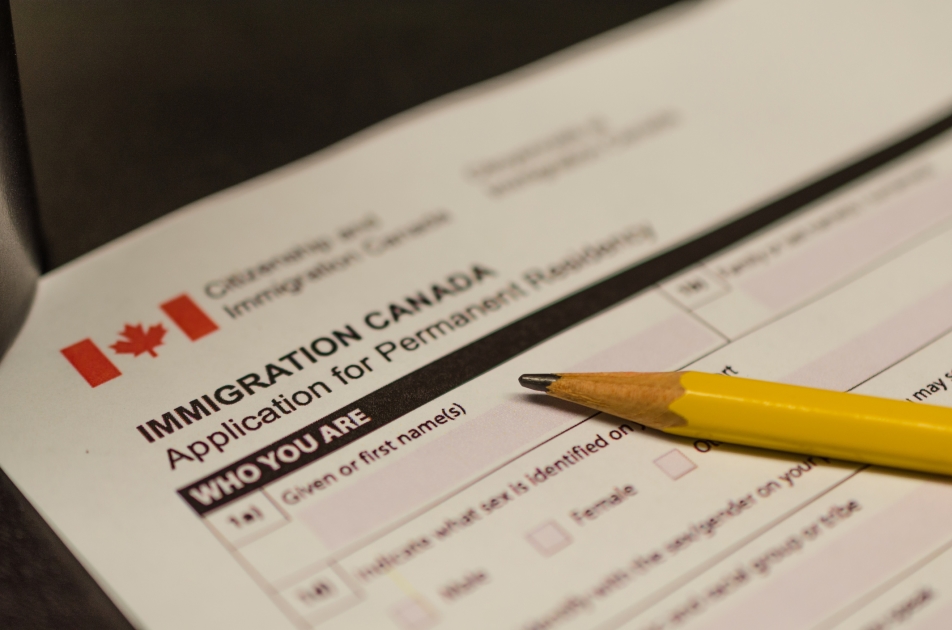Are you considering immigrating to Canada and becoming a permanent resident? The Canada PR process can seem complex, but with the right guidance, it can be navigated smoothly. Here’s a detailed guide to help you understand and navigate the Canada PR process effectively.
Eligibility criteria
Research and Preparation
Before diving into the Canada PR process, conduct thorough research about the various immigration programs available and the eligibility criteria for each. Consider seeking assistance from best visa consultant in Mumbai to guide you through the process.
Journeying through diverse immigration schemes can assist you in pinpointing the one that most aptly aligns with your credentials, professional trajectory, and individual circumstances Some of the popular immigration pathways to Canada include:
- Express Entry System: A points-based system that manages applications for three federal economic immigration programs – the Federal Skilled Worker Program, the Federal Skilled Trades Program, and the Canadian Experience Class.
- Provincial Nominee Programs (PNPs): Offered by individual provinces and territories, PNPs allow provinces to nominate individuals who wish to immigrate to Canada and settle in a specific province or territory.
- Family Sponsorship: Allows Canadian citizens and permanent residents to sponsor their family members for immigration to Canada.
Choose the Right Immigration Program
Once you’ve conducted your research, it’s time to choose the immigration program that best suits your qualifications and circumstances.It’s crucial to choose a program that closely aligns with your profile since each one has specific eligibility criteria and application procedures.
If you’re applying through the Express Entry System, you’ll need to create an online profile and enter the Express Entry pool.Your profile’s ranking will be determined by a multitude of factors, including age, educational background, work history, language skills, and adaptability. Candidates with the highest Comprehensive Ranking System (CRS) scores are invited to apply for permanent residency through regular draws conducted by Immigration, Refugees, and Citizenship Canada (IRCC).
Complete Language Proficiency Tests
Language proficiency is a crucial aspect of the Canada PR process. Applicants are required to demonstrate proficiency in either English or French by taking approved language tests such as the International English Language Testing System (IELTS) or the Canadian English Language Proficiency Index Program (CELPIP) for English, and the Test d’Évaluation de Français (TEF) for French.
Achieving the minimum language proficiency scores required by IRCC is essential for a successful PR application. Depending on the immigration program you’re applying through, you may need to meet specific language proficiency requirements.
Obtain Educational Credential Assessment (ECA)
If your education was obtained outside of Canada, you’ll need to obtain an Educational Credential Assessment (ECA) to assess the equivalency of your foreign educational credentials to Canadian standards. An ECA is required for immigration programs that have education as a selection factor, such as the Federal Skilled Worker Program under Express Entry.
There are designated organizations in Canada that provide ECAs, and you’ll need to submit your educational documents to these organizations for assessment. Once you receive your ECA report, it will indicate how your foreign qualifications compare to Canadian standards.
Gather Required Documents
Once you’ve determined your eligibility and chosen the immigration program you wish to apply through, it’s time to gather all the required documents for your PR application. The specific documents you’ll need to provide will vary depending on the immigration program you’re applying through and your personal circumstances.
Common documents required for a Canada PR application include:
- Passport or travel document
- Language test results (IELTS, CELPIP, or TEF)
- Educational credentials (degrees, diplomas, transcripts)
- Work experience documents (reference letters, employment contracts)
- Police clearance certificates
- Proof of funds to support yourself and your family in Canada
- Medical examination results
- Marriage certificate (if applicable)
- Birth certificates for accompanying family members
Ensure that all your documents are up to date, accurately completed, and meet the specific requirements outlined by IRCC. Any incomplete or inaccurate documentation could result in delays or rejection of your application.
Submitting Your Application
Create Express Entry Profile
If you’re applying through the Express Entry System, the next step is to create an online profile through the IRCC’s Express Entry portal. You’ll need to provide detailed information about your education, work experience, language proficiency, and other relevant details.
Once your profile is complete, it will be entered into the Express Entry pool, where it will be ranked against other candidates based on the Comprehensive Ranking System (CRS). Candidates with the highest CRS scores are invited to apply for permanent residency through regular draws conducted by IRCC.
Submit Expression of Interest (EOI) or Nomination Application
Depending on the immigration program you’ve chosen, you may need to submit an Expression of Interest (EOI) or a nomination application through a Provincial Nominee Program (PNP) if applicable. Express Entry candidates can also enhance their profile by obtaining a provincial nomination, which awards additional CRS points and increases their chances of receiving an Invitation to Apply (ITA) for permanent residency.
Receive Invitation to Apply (ITA)
If your Express Entry profile meets the eligibility criteria and ranks high in the Comprehensive Ranking System (CRS), you may receive an Invitation to Apply (ITA) for permanent residency. An ITA allows you to formally apply for PR status within a specified timeframe, typically 60 days.
Receiving an ITA is a significant milestone in the Canada PR process and indicates that you have a strong chance of being approved for permanent residency, provided you submit a complete and accurate application.
Medical Examination and Police Clearance
As part of the Canada PR application process, you and your accompanying family members may be required to undergo a medical examination conducted by a designated panel physician. The medical examination assesses your health status and determines your admissibility to Canada.
You’ll also need to provide police clearance certificates from all countries or territories where you’ve lived for more than six months since the age of 18. These certificates demonstrate that you do not have a criminal record and are admissible to Canada.
Submit Canada PR Application
Upon receiving the ITA, you’ll need to submit your complete Canada PR application online through the IRCC’s secure portal within the specified timeframe. Ensure that all required documents are included, and all information provided is accurate and up to date.
Pay close attention to the instructions provided by IRCC and follow the guidelines for completing and submitting your application. Any errors or omissions could result in delays or rejection of your application.
Wait for Application Processing
Once your Canada PR application is submitted, you’ll need to wait for processing by IRCC. The processing time varies depending on factors such as the immigration program you applied through, the volume of applications received, and the complexity of your case.
During this waiting period, you can check the status of your application online through the IRCC’s secure portal. It’s important to be patient and avoid contacting IRCC for updates unless it’s absolutely necessary, as this can delay the processing of your application.
Receive Confirmation of Permanent Residence (COPR)
If your Canada PR application is approved, you’ll receive a Confirmation of Permanent Residence (COPR) document. This document confirms that you have been granted permanent residency in Canada and outlines the conditions of your status.
The COPR will include details such as your name, date of birth, and passport information, as well as the date by which you must travel to Canada to activate your permanent residency. Ensure that all the information on your COPR is correct, and report any errors to IRCC immediately.
Settle in Canada
Upon receiving your COPR, it’s time to make preparations to settle in Canada as a permanent resident. This includes arranging for your travel to Canada, securing accommodation, and familiarizing yourself with the various settlement services and resources available to newcomers.
Once you arrive in Canada, you’ll need to present your COPR and any other required documents to a Canadian immigration officer at the port of entry. The officer will verify your identity and status as a permanent resident before granting you entry into the country.
After landing in Canada, you’ll have certain obligations and responsibilities as a permanent resident, including:
- Residing in Canada for at least 730 days within a five-year period to maintain your permanent resident status.
- Adhering to Canadian laws and regulations and contributing to Canadian society.
- Applying for a Permanent Resident (PR) card as soon as possible after your arrival in Canada.
Your Path to Canadian Permanent Residency
Reaching for Canadian permanent residency marks a significant milestone towards a brighter future. By following the comprehensive guide outlined above and seeking guidance from reputable immigration consultants like Apex Visas, you can confidently navigate the complex Canada PR process.
Connect with Apex Visas for Expert Assistance
Ready to begin your journey towards Canadian permanent residency? Contact Apex Visas today for expert guidance and personalized assistance throughout the immigration process. Our experienced consultants are dedicated to supporting you at every step, ensuring a smooth and successful transition to your new life in Canada.





